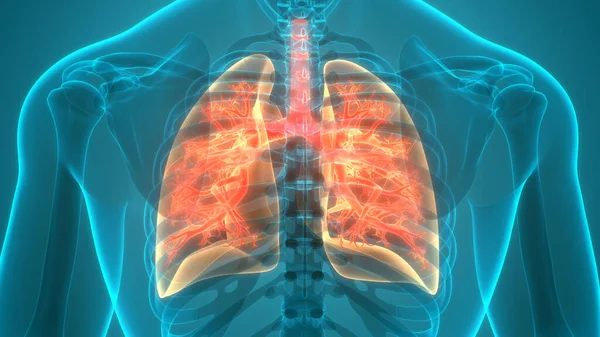Evolution of Tuberculosis – Recent research suggests that tuberculosis infection in humans may have emerged much earlier than previously thought, potentially tens of thousands of years before the earliest known cases in the Middle East. This exciting discovery is the result of a collaboration between Hungarian researchers and an international team, published in a special issue of the journal Tuberculosis.
Tuberculosis, often shortened to TB, is a serious infectious disease caused by bacteria called Mycobacterium tuberculosis. It typically affects the lungs, but can also spread to other parts of the body like the brain, kidneys, and spine.

It spreads through the air when an infected person coughs, sneezes, talks, sings, or laughs. You can inhale the bacteria and become infected.
The Mysterious Timeline:
Pinpointing the exact timing of this transition remains a puzzle. Some evidence suggests it happened in Africa around 70,000 years ago, coinciding with the emergence of early Homo sapiens. Others propose a later date, closer to the rise of agriculture and denser human settlements.
Branching Out: The Mycobacterium Tuberculosis Complex:
Mtb isn’t alone. It’s part of a larger group called the Mycobacterium tuberculosis complex (MTBC), which includes closely related bacteria like Mycobacterium bovis (found in cattle) and Mycobacterium africanum (prevalent in parts of Africa). Understanding the relationships within MTBC helps trace the evolutionary paths and predict potential zoonotic transmission (spillover from animals to humans).
Weapons of WMD: Mtb’s Arsenal of Virulence:
Mtb is a master of survival. Its waxy cell wall makes it resistant to our immune system, and it can hijack our own cells to replicate and spread. It also possesses an array of effector molecules that disrupt our immune response and cause tissue damage, leading to the characteristic symptoms of TB: coughing, fever, weight loss, and fatigue.
Common symptoms include:
- Persistent cough (lasting more than 3 weeks)
- Weight loss
- Fever
- Night sweats
- Fatigue
- Chest pain
Symptoms can vary depending on the location of the infection.
The Rise of Drug Resistance: A New Challenge:
The constant battle between Mtb and our defenses has led to the emergence of drug-resistant strains. Inappropriate antibiotic use and incomplete treatment regimens put selective pressure on the bacteria, favoring those with mutations that enable them to evade our drugs. This poses a major threat to TB control, as these strains are much harder to treat.
New Frontiers in TB Research:
The fight against TB isn’t over. Researchers are working on developing new diagnostics, more effective drugs, and even vaccines. Genomic sequencing is giving us deeper insights into Mtb’s evolution and vulnerabilities, paving the way for personalized treatment strategies.
Understanding the evolution of TB is crucial for:
- Developing effective control strategies: Knowing how Mtb has adapted in the past can help us predict how it might evolve in the future, allowing us to design interventions that stay ahead of the curve.
- Prioritizing research efforts: By understanding the key factors that contribute to Mtb’s virulence and drug resistance, we can focus our research on the most promising targets for new diagnostics and therapeutics.
- Raising awareness: The story of TB’s evolution highlights the dynamic nature of infectious diseases and the importance of ongoing research and public health efforts to combat this ongoing threat.
Key Points
- New evidence: Analysis of Neanderthal remains from Subalyuk cave in Hungary, dating back over 32,000 years, suggests the presence of TB infection. This pushes back the known timeline for TB in humans by tens of thousands of years.
- Hungarian researchers at the forefront: The Department of Biological Anthropology at the University of Szeged and Eötvös Loránd University have played a crucial role in uncovering these new findings, making the Carpathian Basin the best-researched region globally for ancient TB.
- Comprehensive database: The special issue features detailed studies on 18 previously known and 7 newly identified cases of TB from within Hungary, spanning from the Bronze Age to the 16th century. This comprehensive database provides valuable insights into the evolution and manifestation of the disease.
- International collaboration: The research is the result of a successful collaboration between Hungarian researchers, the Ecole Pratique des Hautes Etudes, Eötvös Loránd University, Université Paris-Saclay, and Eurac Research.
- Open access: Five of the studies are Open Access and will remain available for download until January 14, 2024.
Significance:
- This groundbreaking research sheds new light on the history and evolution of tuberculosis, offering valuable insights for future studies and potentially paving the way for improved diagnostics and treatment.
- The collaboration highlights the importance of international cooperation in scientific research and the potential for outstanding results when diverse expertise is combined.
Remember, TB is a complex and evolving disease. While it has a long and formidable history, ongoing research and innovation give us hope for a future free from its devastating impact.
Further Resources:
DON’T MISS: Does Citrus Supplement Ease Knee Swelling and Pain After Surgery? What Study says






